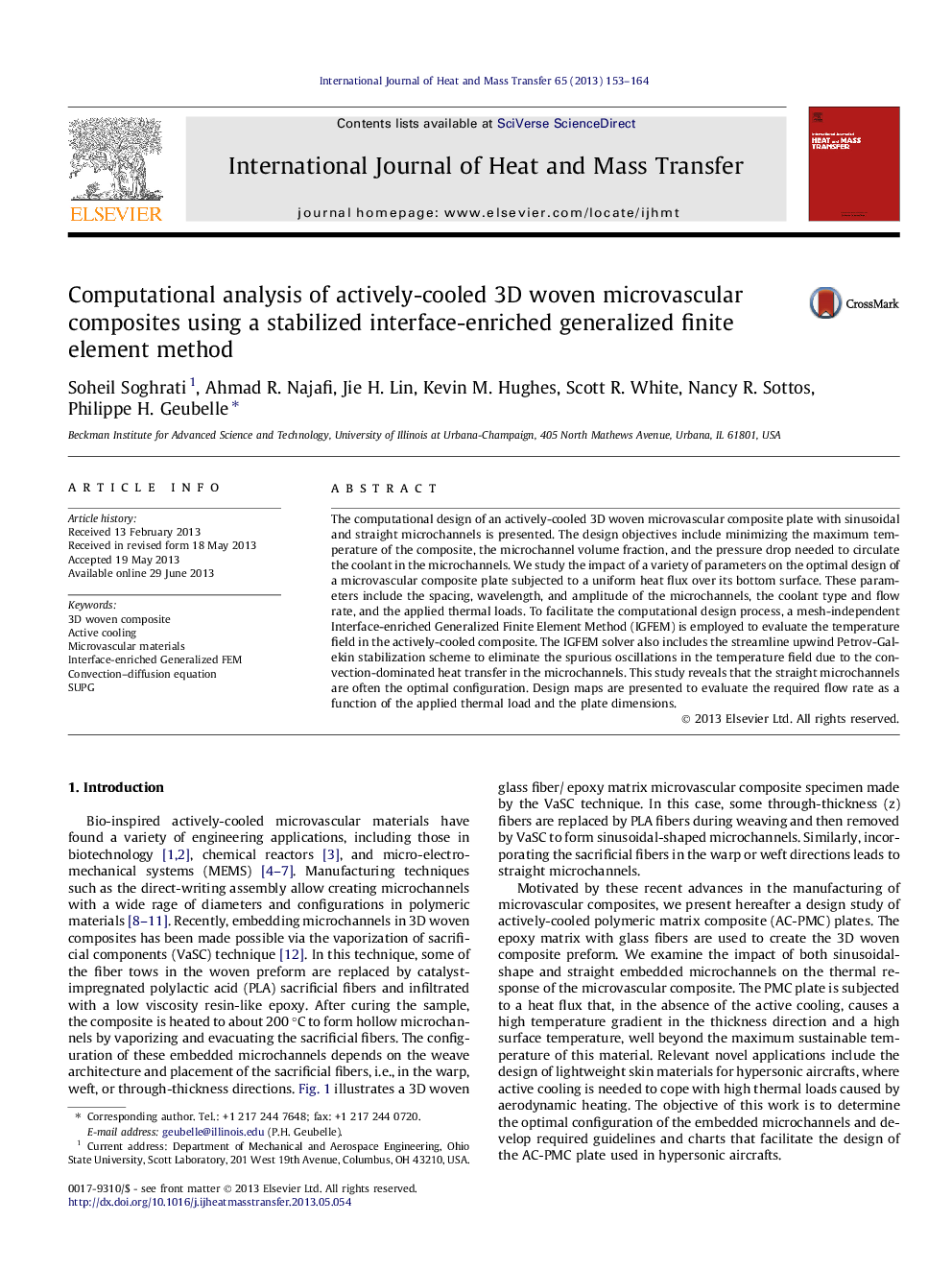| Article ID | Journal | Published Year | Pages | File Type |
|---|---|---|---|---|
| 7058394 | International Journal of Heat and Mass Transfer | 2013 | 12 Pages |
Abstract
The computational design of an actively-cooled 3D woven microvascular composite plate with sinusoidal and straight microchannels is presented. The design objectives include minimizing the maximum temperature of the composite, the microchannel volume fraction, and the pressure drop needed to circulate the coolant in the microchannels. We study the impact of a variety of parameters on the optimal design of a microvascular composite plate subjected to a uniform heat flux over its bottom surface. These parameters include the spacing, wavelength, and amplitude of the microchannels, the coolant type and flow rate, and the applied thermal loads. To facilitate the computational design process, a mesh-independent Interface-enriched Generalized Finite Element Method (IGFEM) is employed to evaluate the temperature field in the actively-cooled composite. The IGFEM solver also includes the streamline upwind Petrov-Galekin stabilization scheme to eliminate the spurious oscillations in the temperature field due to the convection-dominated heat transfer in the microchannels. This study reveals that the straight microchannels are often the optimal configuration. Design maps are presented to evaluate the required flow rate as a function of the applied thermal load and the plate dimensions.
Related Topics
Physical Sciences and Engineering
Chemical Engineering
Fluid Flow and Transfer Processes
Authors
Soheil Soghrati, Ahmad R. Najafi, Jie H. Lin, Kevin M. Hughes, Scott R. White, Nancy R. Sottos, Philippe H. Geubelle,
